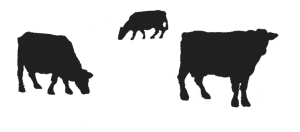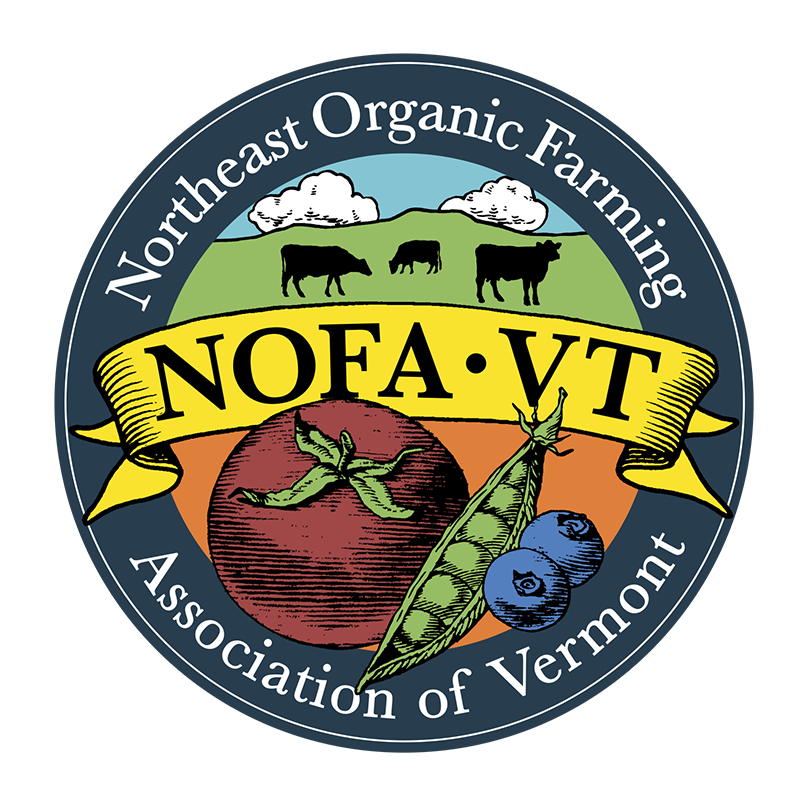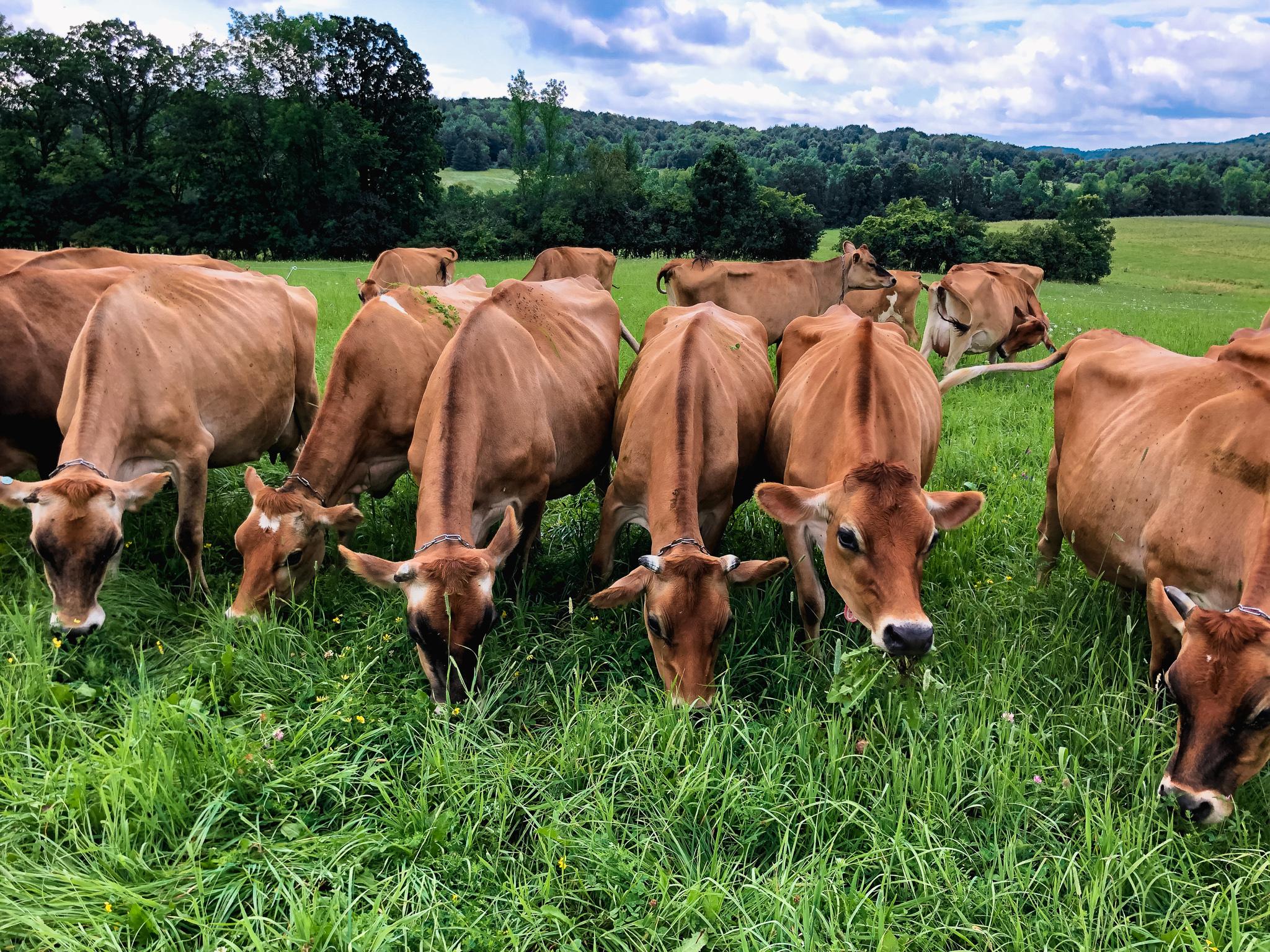 This article is part of the NOFA Vermont Dairy and Livestock Technical Assistance Program.
Organic milk buyers know that milk with a low somatic cell count (SCC) will have longer shelf life, less off flavor and higher cheese yield, which is why they pay quality premiums. Those premiums are a big economic incentive to prevent mastitis and maintain low SCC. Keeping high-count cows out of the tank can do this, but mastitis prevention is ideal. Prevention requires monitoring udder health to detect new mastitis cases early on, as well as adapting management practices to increase sanitation and prevent infections from spreading.
In the article Milk Quality on Organic Dairy Farms, Dr. Linda Tikofski of Cornell University emphasizes the importance of good milking procedures to prevent mastitis. Her list of procedures includes: pre-dipping & wiping with individual towels; fore-stripping into a cup or gutter to remove high SCC milk and bacteria in teat ends; milk fresh heifers first, then low SCC cows, then high SCC cows, then contagious cows last; and applying a post dip to at least 2/3 of the teat. She also said that it is better to leave some milk in the udder than to damage teat ends by pulling down on machines or leaving them on too long.
In a recent webinar on organic dairy cow health, Dr. Guy Jodarski, staff veterinarian for Organic Valley/CROPP Cooperative, also discussed the importance of dry cow management to prevent mastitis, including good dry off procedure, dry cow housing with clean & dry bedding and nutritious high forage diet.
For more information on organic production, herd health, and other technical assistance available from NOFA Vermont, contact Sam Fuller, Program Coordinator, at 802-434-4122 or [email protected].
This article is part of the NOFA Vermont Dairy and Livestock Technical Assistance Program.
Organic milk buyers know that milk with a low somatic cell count (SCC) will have longer shelf life, less off flavor and higher cheese yield, which is why they pay quality premiums. Those premiums are a big economic incentive to prevent mastitis and maintain low SCC. Keeping high-count cows out of the tank can do this, but mastitis prevention is ideal. Prevention requires monitoring udder health to detect new mastitis cases early on, as well as adapting management practices to increase sanitation and prevent infections from spreading.
In the article Milk Quality on Organic Dairy Farms, Dr. Linda Tikofski of Cornell University emphasizes the importance of good milking procedures to prevent mastitis. Her list of procedures includes: pre-dipping & wiping with individual towels; fore-stripping into a cup or gutter to remove high SCC milk and bacteria in teat ends; milk fresh heifers first, then low SCC cows, then high SCC cows, then contagious cows last; and applying a post dip to at least 2/3 of the teat. She also said that it is better to leave some milk in the udder than to damage teat ends by pulling down on machines or leaving them on too long.
In a recent webinar on organic dairy cow health, Dr. Guy Jodarski, staff veterinarian for Organic Valley/CROPP Cooperative, also discussed the importance of dry cow management to prevent mastitis, including good dry off procedure, dry cow housing with clean & dry bedding and nutritious high forage diet.
For more information on organic production, herd health, and other technical assistance available from NOFA Vermont, contact Sam Fuller, Program Coordinator, at 802-434-4122 or [email protected].
Nourishing people, land, & justice through organic agriculture
LEARN MORE
Milk Quality & Mastitis Part I: Prevention
 This article is part of the NOFA Vermont Dairy and Livestock Technical Assistance Program.
Organic milk buyers know that milk with a low somatic cell count (SCC) will have longer shelf life, less off flavor and higher cheese yield, which is why they pay quality premiums. Those premiums are a big economic incentive to prevent mastitis and maintain low SCC. Keeping high-count cows out of the tank can do this, but mastitis prevention is ideal. Prevention requires monitoring udder health to detect new mastitis cases early on, as well as adapting management practices to increase sanitation and prevent infections from spreading.
In the article Milk Quality on Organic Dairy Farms, Dr. Linda Tikofski of Cornell University emphasizes the importance of good milking procedures to prevent mastitis. Her list of procedures includes: pre-dipping & wiping with individual towels; fore-stripping into a cup or gutter to remove high SCC milk and bacteria in teat ends; milk fresh heifers first, then low SCC cows, then high SCC cows, then contagious cows last; and applying a post dip to at least 2/3 of the teat. She also said that it is better to leave some milk in the udder than to damage teat ends by pulling down on machines or leaving them on too long.
In a recent webinar on organic dairy cow health, Dr. Guy Jodarski, staff veterinarian for Organic Valley/CROPP Cooperative, also discussed the importance of dry cow management to prevent mastitis, including good dry off procedure, dry cow housing with clean & dry bedding and nutritious high forage diet.
For more information on organic production, herd health, and other technical assistance available from NOFA Vermont, contact Sam Fuller, Program Coordinator, at 802-434-4122 or [email protected].
This article is part of the NOFA Vermont Dairy and Livestock Technical Assistance Program.
Organic milk buyers know that milk with a low somatic cell count (SCC) will have longer shelf life, less off flavor and higher cheese yield, which is why they pay quality premiums. Those premiums are a big economic incentive to prevent mastitis and maintain low SCC. Keeping high-count cows out of the tank can do this, but mastitis prevention is ideal. Prevention requires monitoring udder health to detect new mastitis cases early on, as well as adapting management practices to increase sanitation and prevent infections from spreading.
In the article Milk Quality on Organic Dairy Farms, Dr. Linda Tikofski of Cornell University emphasizes the importance of good milking procedures to prevent mastitis. Her list of procedures includes: pre-dipping & wiping with individual towels; fore-stripping into a cup or gutter to remove high SCC milk and bacteria in teat ends; milk fresh heifers first, then low SCC cows, then high SCC cows, then contagious cows last; and applying a post dip to at least 2/3 of the teat. She also said that it is better to leave some milk in the udder than to damage teat ends by pulling down on machines or leaving them on too long.
In a recent webinar on organic dairy cow health, Dr. Guy Jodarski, staff veterinarian for Organic Valley/CROPP Cooperative, also discussed the importance of dry cow management to prevent mastitis, including good dry off procedure, dry cow housing with clean & dry bedding and nutritious high forage diet.
For more information on organic production, herd health, and other technical assistance available from NOFA Vermont, contact Sam Fuller, Program Coordinator, at 802-434-4122 or [email protected].
